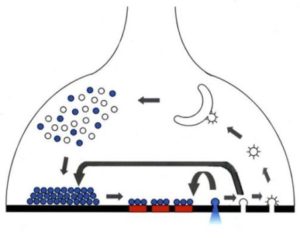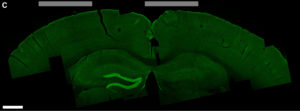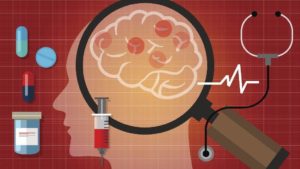 Researchers have identified the precise toxic mechanism at work during an overabundance of the protein alpha-synuclein in neurons—the protein is a key causative agent in the development of Parkinson’s disease.
Researchers have identified the precise toxic mechanism at work during an overabundance of the protein alpha-synuclein in neurons—the protein is a key causative agent in the development of Parkinson’s disease.
LiveScience: Dreams and Brain Disease: REM Sleep Cells Linked to Disorders
 Where do dreams come from? Researchers now say they know: A specific group of cells in the brain stem is responsible for controlling dreaming sleep, also called Rapid Eye Movement (REM) sleep, a new study says…. Full Story>
Where do dreams come from? Researchers now say they know: A specific group of cells in the brain stem is responsible for controlling dreaming sleep, also called Rapid Eye Movement (REM) sleep, a new study says…. Full Story>
New York Times: New Electrical Brain Stimulation Technique Shows Promise in Mice
 Pulses of electricity delivered to the brain can help patients with Parkinson’s disease, depression, obsessive-compulsive disorder and possibly other conditions. But the available methods all have shortcomings: They either involve the risks of surgery, from implanting electrodes deep within the brain, or they stimulate from the skull’s surface, limiting the ability to target electricity to the right brain areas…. Full Story>
Pulses of electricity delivered to the brain can help patients with Parkinson’s disease, depression, obsessive-compulsive disorder and possibly other conditions. But the available methods all have shortcomings: They either involve the risks of surgery, from implanting electrodes deep within the brain, or they stimulate from the skull’s surface, limiting the ability to target electricity to the right brain areas…. Full Story>
MedPage Today: “In major study, mortality among patients with PD was “only moderately increased compared with the general population”
 Excerpt: “This is a very well done epidemiological study,” David Standaert, MD, PhD, of the University of Alabama at Birmingham, told MedPage Today in an email. The finding that the risk of death from PD has not changed in 30 years in Minnesota’s Olmsted County is “worth noting,” said Standaert. “It suggests that while newer treatments may be improving the quality of life for PD patients, they are not making them live longer.”
Excerpt: “This is a very well done epidemiological study,” David Standaert, MD, PhD, of the University of Alabama at Birmingham, told MedPage Today in an email. The finding that the risk of death from PD has not changed in 30 years in Minnesota’s Olmsted County is “worth noting,” said Standaert. “It suggests that while newer treatments may be improving the quality of life for PD patients, they are not making them live longer.”LA Times: Does Parkinson’s disease begin in the gut? New research suggests it does
 They say that “what happens in Vegas stays in Vegas.” But this is definitely not true of the vagus nerve, which wanders from the stomach to the brain, passing through the heart, esophagus and lungs along the way.
They say that “what happens in Vegas stays in Vegas.” But this is definitely not true of the vagus nerve, which wanders from the stomach to the brain, passing through the heart, esophagus and lungs along the way.
A new study offers fresh support for an intriguing theory about the vagus nerve’s role in Parkinson’s disease, a neurological disorder that causes tremors, gait difficulties and sometimes dementia in roughly 1 million Americans and as many as 10 million people worldwide…. Full Story>
- « Previous Page
- 1
- …
- 3
- 4
- 5
- 6
- 7
- Next Page »